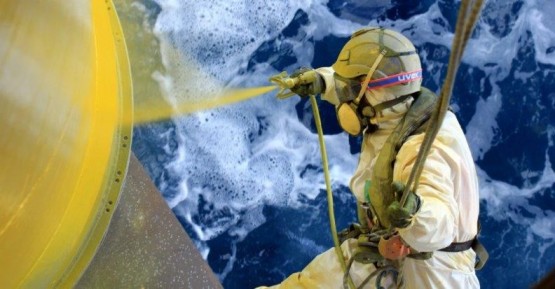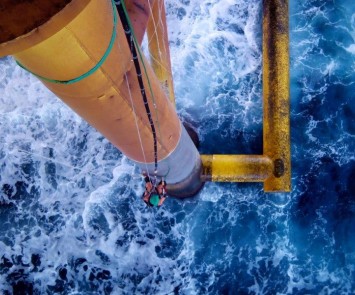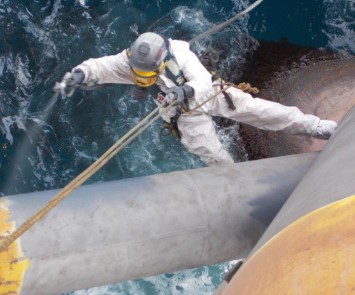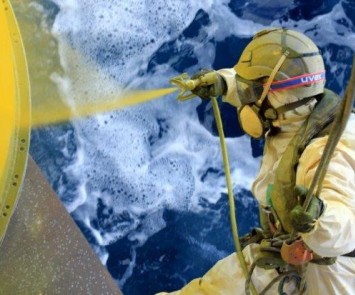The Splash Zone
Painting Campaign
SubC initiated the Splash Zone Painting Campaign in 2017 at Tyra East and West and completed the job within the time frame despite challenging weather conditions.
Directly in and above the splash zone
The campaign comprised the refurbishment of the structures from the spider deck to the cellar deck including the risers, legs and bracings – and thus we were working directly in and above the splash zone.
The rope access technicians worked from ropes, worked on the lower last 3 meters and the bracings. The rest of the job was performed from scaffolding.
The surfaces were sandblasted to SA2.5 to ensure the optimal conditions when applying the paint layers.
Challenging weather and teamwork
The campaign had a length of 3 months on each of the two platforms (Tyra East and West). During the campaign, we used 16 rope access technicians divided onto the two platforms, further divided into two rotation shifts of 4 rope access technicians for each platform. They worked continuously until the project was completed.
Our colleagues out in the North Sea was met with challenging weather conditions. However, a good, professional working relationship with the Tyra staff and Climb Partner, who were supplying the highly trained rope access technicians, ensured that the job was completed within the time frame despite the weather.
A solution for the future of painting
At present, we are working on a new solution for blasting and painting in and above the splash zone. Prospectively our Robotic Crawler will solve these challenges tasks, as it is a remote operated tool platform with the possibility of attaching tools and equipment, such as blasting and painting tools. This will significantly improve HSE, as human personnel would not have to tackle the risky work due to ocean waves.
Read more about the Robotic Crawler and its applications here
The Tyra field
The Tyra field is located in the Danish Sector of the North Sea, 225 km west of Esbjerg.
The field has been the centre of Denmark’s national energy infrastructure since 1984, processing 90 % of the gas production.



